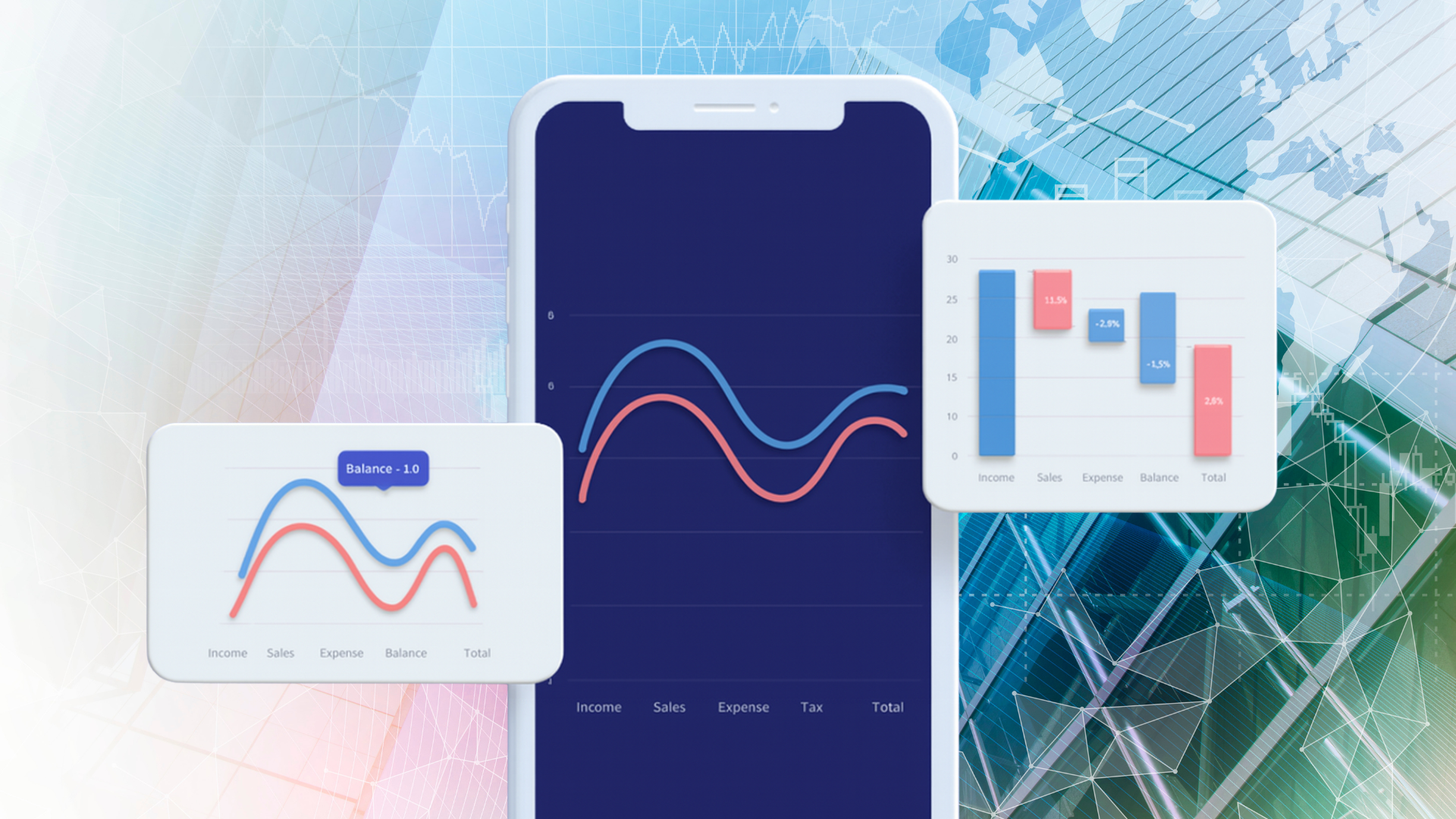Your FP&Ai Insight Hub
Ai Automation Insights
Categories

Let’s be honest: most finance reports don’t change a thing. They’re neat. They’re compliant. They’re full of numbers. But they don’t make anyone act differently. Why? Because they lack one thing: clarity with purpose. The Problem with “Actual vs Target” I’ve seen it a hundred times— a finance team proudly presents their month-end pack: “Here’s actual vs target.” “Here’s the variance.” And that’s it. It’s like reading the scoreboard of a game you didn’t watch. You know the score, but you don’t know how you got there or what to do next. Andrew Brown’s Challenge In our FP&Ai Podcast, Andrew Brown puts it bluntly: “If finance isn’t helping people see why the numbers matter—and what actions to take —then it’s not a business partner. It’s just ticking boxes.” And he’s right. Compliance reporting is important, but it doesn’t change behaviour. Finance should be leading the conversation about performance , not just filing historical reports. The Power of Storytelling Remember Johan, the volunteer deacon with the worm and waterfall charts? He didn’t just report. He told a story. His charts answered three critical questions: 1. Where are we now? 2. Why are we here? 3. What should we do about it? That’s why people leaned in. That’s why donations spiked. The numbers suddenly had meaning. The Corporate Blind Spot In business, we love detail. We produce 30-page packs with pivots, ratios, and footnotes. We convince ourselves that more data means more value. But it doesn’t. It’s not about data—it’s about insight. It’s about showing the 3 things that matter this week, and making them so clear that no one can miss them. Your Next Move If your reports aren’t driving action, they’re just noise. Try this: Cut 80% of your report. Focus on the story behind the key numbers. Use one or two visuals that show what’s really happening. Ask yourself: If Johan could make a whole congregation act with two charts, what’s stopping us from doing the same in business? ________________________________________ This article is inspired by my conversation with Andrew Brown on the FP&AI Podcast – Episode 1: Finance as a True Business Partner – Beyond the Numbers.

Finance updates are supposed to guide decisions. So why do most of them feel like punishment? Black-and-white statements. Tables of variances. Forty pages of data that leave everyone bored and none the wiser. Then there’s Johan. A Volunteer Who Changed the Game Johan wasn’t a corporate CFO. He was a volunteer deacon , leading the finance committee at his church. No big team. No flashy tools. Just a conviction that numbers should make sense —and inspire action. When the church needed to raise funds to hit its objectives, Johan knew the standard “actual vs target” report wouldn’t cut it. So, he built two charts that changed everything: 1. The Worm Chart The worm chart tracked donations against budget— the budget the church had calculated to achieve its goals. Whenever donations dipped, Johan simply put the worm chart on the screen. No guilt trips. No lengthy explanations. And bam—donations came in. People didn’t need persuasion. They just needed to see the gap and understand the story behind it. 2. The Waterfall Chart AGMs used to be tedious marathons of financial statements— page after page of black-and-white tables no one wanted to read. Johan cut through that noise. His waterfall chart, explained in just a few minutes, was 90% of what people needed to understand the finances. It showed how actual finances tracked to budget— positive variances, negative variances, the size of every gap— all on one clean, visual chart. Suddenly, finance wasn’t boring. It was clear. It mattered. The Real Lesson Here’s the kicker: Johan used the same Excel everyone else had. It wasn’t about the tool. It was clarity and creative thinking that won the day. Finance doesn’t need more complex reporting. It needs leaders who can tell the story behind the numbers. The Challenge to Finance Teams Would your reports spark action? Would they make the story obvious—so obvious that people couldn’t help but respond? If not, maybe it’s time to simplify. Find your worm chart. Build your waterfall. Make the numbers impossible to ignore. This article is inspired by my conversation with Andrew Brown on the FP&AI Podcast – Episode 1: Finance as a True Business Partner – Beyond the Numbers.

In the world of finance, numbers tell a story. However, that story is often buried beneath layers of spreadsheets and complex datasets. For financial professionals, the challenge is not just about understanding these numbers but also presenting them in a way that drives decision-making and inspires action. Enter data visualisation – the art of transforming data into clear, compelling visuals. Among the tools that have proven especially powerful are the line graph and the waterfall chart. These visuals help finance teams translate dry statistics into impactful narratives. In this article, we explore how these graphs can transform financial storytelling. The Importance of Data Visualisation in Finance Finance professionals are accustomed to handling vast amounts of data, from profit margins and revenue growth to expense tracking and risk assessments. Yet, presenting these figures effectively to stakeholders is a different ballgame. Visualisation simplifies this process, turning complex data sets into accessible insights. When done correctly, data visualisation: Enhances comprehension: Humans process visuals 60,000 times faster than text, making it easier for stakeholders to grasp key information quickly. Drives decision-making: Clear and compelling visuals help executives make informed decisions without wading through dense reports. Highlights trends and outliers: Visual tools can bring hidden trends and anomalies to light, prompting timely actions. Improves understanding and communication with business - Business doesn't always get what Finance is trying to communicate and good visualisations go a long way to bridging the gap. Better communication improves alignment to strategic financial goals. The line Graph: Unravelling Trends Over Time The line graph, also known as a stream graph or a stacked area graph, is a powerful tool for visualising changes in data over time. It is especially effective in showing how multiple categories contribute to an overall trend. In finance, line graphs can illustrate revenue streams, expense categories, or investment performance in a visually engaging manner. Use Case: Revenue Streams Analysis Imagine a financial report for a company with diverse revenue streams, such as product sales, services, and subscriptions. A line graph can display how each stream has evolved, highlighting peaks and troughs. The thickness of each ‘line’ represents the contribution of that revenue stream to the total, making it easy to spot which areas drive growth. Benefits of line Graphs: Trends Made Simple: Displays how multiple components evolve over time. Visual Impact: The fluid, organic design makes it easier to follow changes. Comparative Insight: Helps compare different categories intuitively. The Waterfall Chart: Bridging the Gap Between Figures Waterfall charts excel at breaking down the cumulative effect of sequential data points, making them ideal for financial analysis. They help bridge the gap between figures by showing how individual elements contribute to a total. Commonly used in profit and loss statements, budget analysis, and variance reports, these charts provide clarity in understanding how specific actions impact the bottom line. Use Case: Profit and Loss Analysis A financial analyst preparing a quarterly report might use a waterfall chart to demonstrate how various factors—like increased sales, higher marketing spend, and cost savings—impacted net profit. The chart’s structure, with its clear progression from starting figures to the final result, makes it easy for stakeholders to follow the financial narrative. Benefits of Waterfall Charts: Clarity: Simplifies complex financial data by showing individual contributions to total figures. Transparency: Clearly distinguishes between positive and negative impacts. Decision Support: Helps executives understand the key drivers of financial performance. Choosing the Right Visual for the Right Data Selecting the appropriate visual tool depends on the story you want to tell: Use line graphs for illustrating trends across multiple categories over time. Opt for waterfall charts when you need to detail the step-by-step impact of specific factors on an overall financial figure. By mastering these tools, finance professionals can enhance their storytelling, transforming raw data into insights that drive strategic decisions. Conclusion: From Data to Decisions The ability to visualise data effectively is a powerful advantage. The line graph and waterfall chart are more than just visual aids—they are essential tools for financial professionals looking to make data-driven decisions that resonate with stakeholders. By adopting these techniques, finance teams can turn numbers into narratives that not only inform but also inspire action. In the end, the power of finance lies not just in analysing data but in presenting it with impact.

For more insight, listen to our podcast.
At FP&Ai, we believe finance is more than numbers, it’s about insight.

